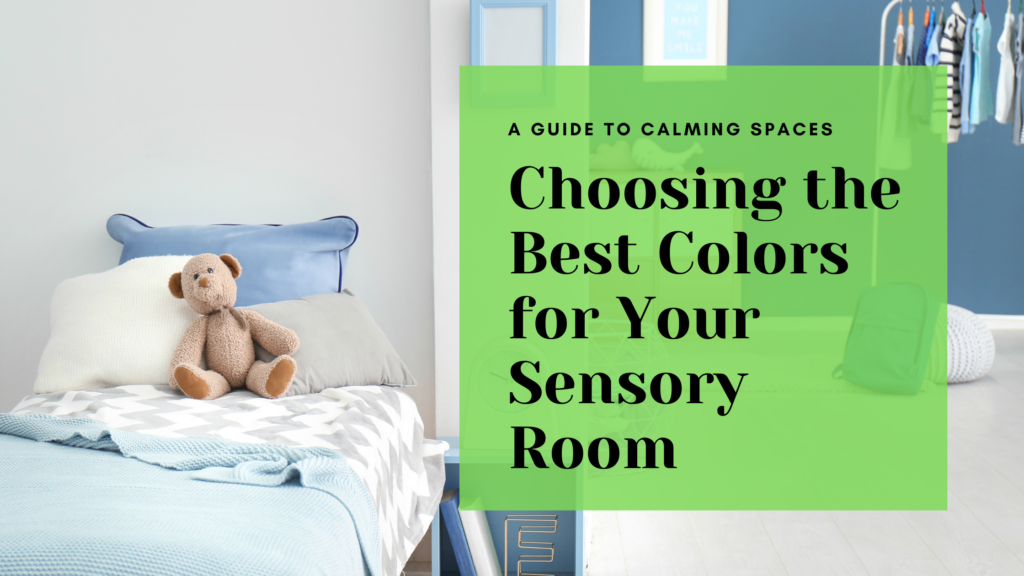I. Introduction
The Growing Need for Sensory Rooms
Sensory rooms have become increasingly important for children with autism and sensory processing disorders. These special rooms are designed to provide a calming environment where children can engage with their senses in a controlled way. Sensory rooms help children manage stress, improve focus, and feel more comfortable in their surroundings. For many families, having a sensory-friendly space at home can make a big difference in a child’s daily life.
Creating a sensory room doesn’t have to be expensive. While some people might think that setting up such a space is costly, there are many ways to design a sensory room that fits within a budget. This article will guide you on how to create an effective sensory room without spending a lot of money.
The Challenge of Budget Constraints
One of the biggest concerns parents have is the cost of creating a sensory room. It’s easy to get overwhelmed when looking at the price tags of some sensory products. However, it’s possible to build a functional and calming sensory room without breaking the bank. This guide will show you how to focus on what’s most important and make smart choices that save money while still meeting your child’s sensory needs.
II. Planning Your Budget-Friendly Sensory Room
Setting a Realistic Budget
Before you start designing your sensory room, it’s crucial to set a realistic budget. Knowing how much you can afford to spend will help you make better decisions and avoid overspending. Start by listing all the things you want to include in your sensory room, then prioritize them based on importance. Focus first on the essential items that will have the most impact on your child’s well-being.
Remember, you don’t need to buy everything at once. You can start small, adding items over time as your budget allows. Also, keep an eye out for sales or discounts that can help you stretch your budget further.
Assessing Your Space and Needs
Choosing the right space in your home is another important step in planning your sensory room. It doesn’t have to be a large room; even a small corner can be transformed into a sensory-friendly area. Look for a quiet spot that’s away from high-traffic areas in your home.
Next, think about your child’s specific sensory needs. Do they need a place to calm down, or do they require more active sensory input? Understanding these needs will help you make cost-effective decisions about what to include in the room.
III. Cost-Effective Sensory Room Ideas
DIY Sensory Room Projects
One of the best ways to save money is by making some of the sensory items yourself. Homemade Sensory Tools like weighted blankets, sensory bottles, and fidget toys can be created using affordable materials. For example, you can fill a plastic bottle with water, glitter, and small toys to make a sensory bottle that helps your child relax. Weighted blankets can be sewn at home with fabric and inexpensive filler materials like rice or beans.
Another great idea is Repurposing Household Items for your sensory room. Items you already have at home, like pillows, curtains, and lamps, can be used creatively. For instance, you can use soft pillows to create a cozy corner or repurpose an old lamp with a new, calming light bulb.
Budget-Friendly Sensory Room Furniture
Furniture can be one of the more expensive parts of setting up a sensory room, but there are ways to save money. Secondhand and Upcycled Furniture can be a great option. Look for gently used items at thrift stores, garage sales, or online marketplaces. With a little bit of cleaning or a fresh coat of paint, secondhand furniture can be as good as new.
Consider using Multi-Purpose Items to get more value for your money. For example, a bean bag chair can serve as both a comfortable seating option and a fun place for your child to relax. This way, you don’t have to buy separate items for different purposes.
Affordable Sensory Room Equipment
When it comes to sensory room equipment, lighting and tactile experiences are key. Fortunately, there are many budget-friendly options available. For Low-Cost Sensory Lighting, consider using LED strip lights or inexpensive lava lamps. These lights can create a calming atmosphere without costing a lot. LED strip lights are versatile and can be placed around the room to add a soft glow that is both soothing and visually stimulating.
For Inexpensive Tactile Experiences, you can create tactile walls or areas using affordable materials like fabric swatches, foam tiles, or textured wallpaper. These materials can be found at craft stores or online at a low cost. You can attach them to the walls or floors to provide a variety of textures for your child to explore.
Sound and Smell on a Budget
Sound and smell are important senses to consider in a sensory room. Affordable Sound Solutions include using low-cost sound machines, downloading apps, or even playing calming soundtracks from YouTube. These options provide soothing background noise, such as white noise, ocean waves, or nature sounds, which can help your child relax and focus.
For Inexpensive Aromatherapy, you can use affordable essential oils and simple diffusers to create a calming scent environment. Essential oils like lavender or chamomile are known for their relaxing properties and can be found at reasonable prices. Even a small bowl of dried lavender or a homemade sachet can add a calming scent to the room.
IV. Tips for Keeping Costs Down
Shopping Smart: Where to Find Deals
Finding deals on sensory room products can significantly reduce costs. Check out online sales, discount stores, and community marketplaces for bargains. Websites like eBay, Amazon, and even local buy-and-sell groups on social media often have good deals on sensory room supplies. Thrift stores and garage sales are also great places to find inexpensive items that can be used or repurposed for your sensory room.
Utilizing Free and Low-Cost Resources
Take advantage of free and low-cost resources available in your community. Many organizations offer DIY guides, workshops, or support groups where you can get ideas and materials for your sensory room. Libraries, local autism support centers, and online communities are excellent places to start. You might also find that other parents have tips and tricks for creating affordable sensory spaces.
Prioritizing What’s Most Important
When working with a limited budget, it’s essential to focus on the most important elements of a sensory room. Start by identifying the key items that will have the biggest impact on your child’s well-being. For example, if your child is particularly sensitive to light, investing in good quality lighting might be more important than buying expensive furniture. By prioritizing the most crucial aspects, you can ensure that your sensory room is both effective and affordable.
V. Case Studies: Affordable Sensory Room Examples
Real-Life Examples
Let’s look at some real-life examples of sensory rooms that were created on a budget. One family transformed a small corner of their living room into a sensory space using secondhand furniture, DIY sensory tools, and affordable lighting. They spent less than $200 but created a space where their child feels safe and relaxed.
Another example is a family who repurposed items from around their home to build a sensory room. They used old pillows to make a cozy reading nook and added homemade sensory bottles and fidget toys. The total cost was minimal, but the impact on their child’s comfort and happiness was significant.
Lessons Learned
These examples show that it’s possible to create a functional and calming sensory room without spending a lot of money. The key takeaways are to get creative with what you have, prioritize your spending on essential items, and look for deals wherever possible. By focusing on your child’s specific needs and using budget-friendly solutions, you can create a sensory room that is both affordable and effective.
VI. Conclusion
Recap of Budget-Friendly Tips
Creating a sensory room on a budget is entirely possible with a little planning and creativity. Start by setting a realistic budget and assessing your space and your child’s needs. Consider DIY projects, repurposing household items, and shopping smart for deals on furniture and equipment. Focus on the most important elements first, and don’t be afraid to seek out free and low-cost resources.
Encouragement to Start Designing
Don’t let budget constraints hold you back from creating a sensory-friendly space for your child. Every little bit helps, and even small changes can make a big difference in your child’s daily life. Start with what you can afford, and build your sensory room over time.
We encourage you to share your own affordable sensory room ideas with others, connect with support groups for additional resources, and continue exploring ways to make your home a more calming and supportive environment for your child. Your efforts will help your child feel more comfortable, secure, and happy at home.


